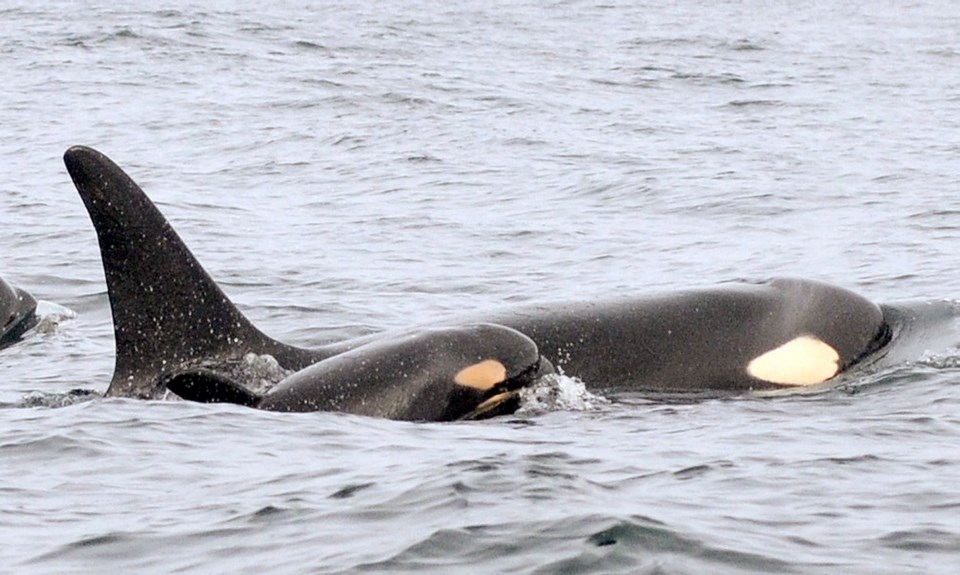A group of sport fishermen and members of the T’Sou-ke Nation are helping to feed southern resident orcas by stocking local waters with some of the marine mammal’s favourite food.
The South Vancouver Island Anglers Coalition has received federal approval to introduce 200,000 chinook salmon smolt to the Sooke Basin.
“The principal purpose of this is to provide additional food for the killer whales during a key time of year when they’re fattening themselves up to go into winter,” said coalition president Chris Bos.
One of the main threats to the endangered southern resident orcas, which number about 80, is a reduction in food sources.
Chinook make up more than 90 per cent of resident killer whales’ spring and summer salmon diet and their abundance is linked to killer whale mortality, birth rates and survival, the Raincoast Foundation says.
The chinook will be raised at the Department of Fisheries and Oceans’ Nitinat Hatchery until they reach the smolt, or juvenile, stage. They will then be transported to the Sooke Basin and placed in a netted marine enclosure for two to three weeks. Their health and environmental conditions will be monitored daily, Bos said.
“During that time, they will be able to condition themselves to the Sooke River,” Bos said. “The water from the Sooke River is passing through the area where the net is, so they will be able as adults to home back in on the Sooke River as their natal stream.”
Three to four years after the fish are released from their pens, they will return as large adults, some weighing more than 30 pounds. Between 2,500 and 5,000 adults are expected to return.
While anglers will benefit, it’s not about that, Bos said. If it were, they would try to build stocks for periods of lower abundance, which prompt fishing restrictions. Instead, the chinook they foster will return as adults between July and September, when there are no restrictions on chinook fishing.
Other partners on the projects include the Juan de Fuca Salmon Restoration Society and the Pacific Whale Watchers Association.
“We have killer whales that are endangered, we have a place where we can do something that will benefit those killer whales, and we have groups that want to do something from a community perspective,” Bos said.
The community group hopes to turn the salmon enhancement initiative into a multi-year project, possibly increasing broods to two million in a few years. It requested permission this year for a brood of 500,000, but was approved for 200,000.
Lara Sloan, spokeswoman for Fisheries and Oceans Canada, said the federal department must take into account all hatchery and salmon enhancement initiatives when granting approval to projects like this.
“There are a number of parties in the Sooke area who are interested in increasing productions and returns,” she said.
The 200,000 cap was deemed an appropriate start for determining the technical capacity and ability of the group.
“Once this is assessed, the target release number can be revisited in the future.”



